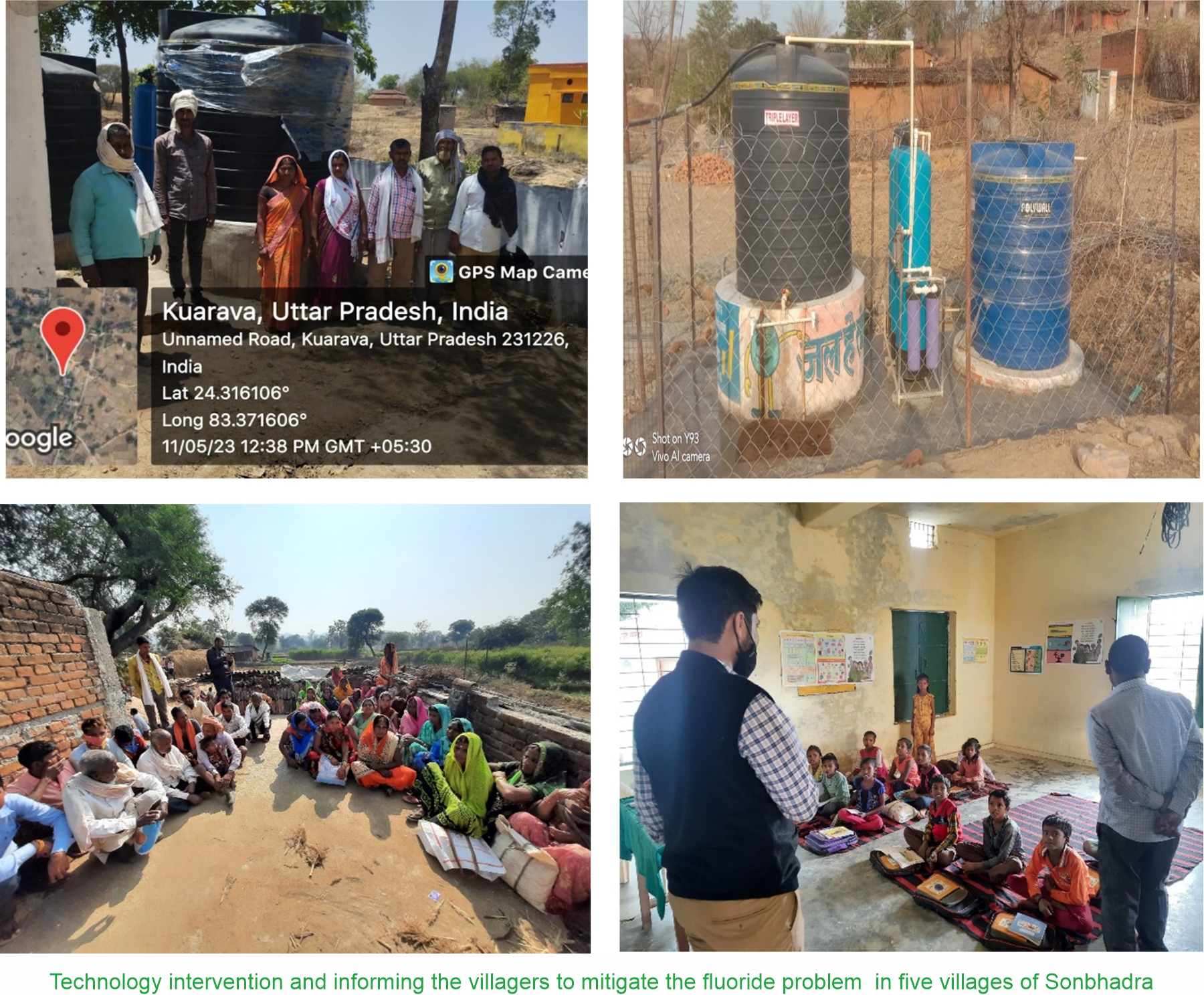|
Sonbhadra, also named Sonebhadra, is the second largest district in Uttar Pradesh and the only district bordering four states of Jharkhand, Chhattisgarh, Madhya Pradesh, and Bihar. It is one of the aspirational districts of Uttar Pradesh, with 82% of the population residing in rural areas. Fluoride Contamination Fluoride contamination in groundwater has become a considerable threat to our society. Fluoride in drinking water is due to fluoride-rich rocks and soil, volcanic activities, grasses-grains, and anthropogenic activities. The World Health Organization and the Bureau of Indian Standards have regulated an upper limit for fluoride in drinking water to be 1.5 and 1 mg/L, respectively. Excess amounts of fluoride in drinking water may cause dental fluorosis, skeletal fluorosis, osteoporosis, fatigue, and joint-related problems. As per a report of NDTV (a study conducted by CSE in 2011), out of the total 600 villages in the Sonbhadra district, 150 villages suffer from excess fluoride in groundwater beyond the permissible limit. With the support of the Department of Science and Technology (DST) and LIC-HFL, the Society for Development Alternatives, implemented the project, recognising the significant issue of fluoride contamination in the groundwater of Sonbhadra, and has taken a proactive initiative to address and resolve this problem.
Mitigate the Problem A case study was conducted in the districtís 21 villages (1050 households: 50 households per village). A contamination mapping of fluoride, total dissolved solids, pH, and temperature in groundwater was done. The contamination maps were prepared using ArcGIS software. It was observed that 76% of the villages suffer from high fluoride concentrations in groundwater, which is greater than 1 mg/L. A survey was conducted in the 21 villages with the help of a questionnaire; it consisted of five sections: basic details of the villagers, details of the self-help groups and village organisations, details of land and farmland owned by the villagers, livelihood and income-source data, and data about water scarcity, water quality, and the associated health effects. The Result From the survey it was inferred that the annual average income of a household is Rs 59,775; in terms of education, out of the total population, 17.6% of the people have never been to school, whereas 47.2% had only primary education. It was also observed that 56.6% of the people suffer from dental fluorosis and 7.9% suffer from skeletal fluorosis. Therefore, based on the findings of these in-depth surveys conducted in the 21 villages, five villages (Kuarawa, Doomar, Chachi Khurd, Gidhiya and Kota) were selected for mitigating the issue of fluoride in drinking water and its associated health impacts with the help of intervention technology. Fluoride removal technologies were intervened in the form of a Locally Owned Community-Operated (LOCO) model in the respective villages through a sustainable citizen science approach. It is believed that the intervention will help in maintaining an equitable water distribution to the villagers. Till now, the intervention has benefitted about 8000 lives by providing fluoride-safe drinking water to the community.
Aparna
Upadhyay |
